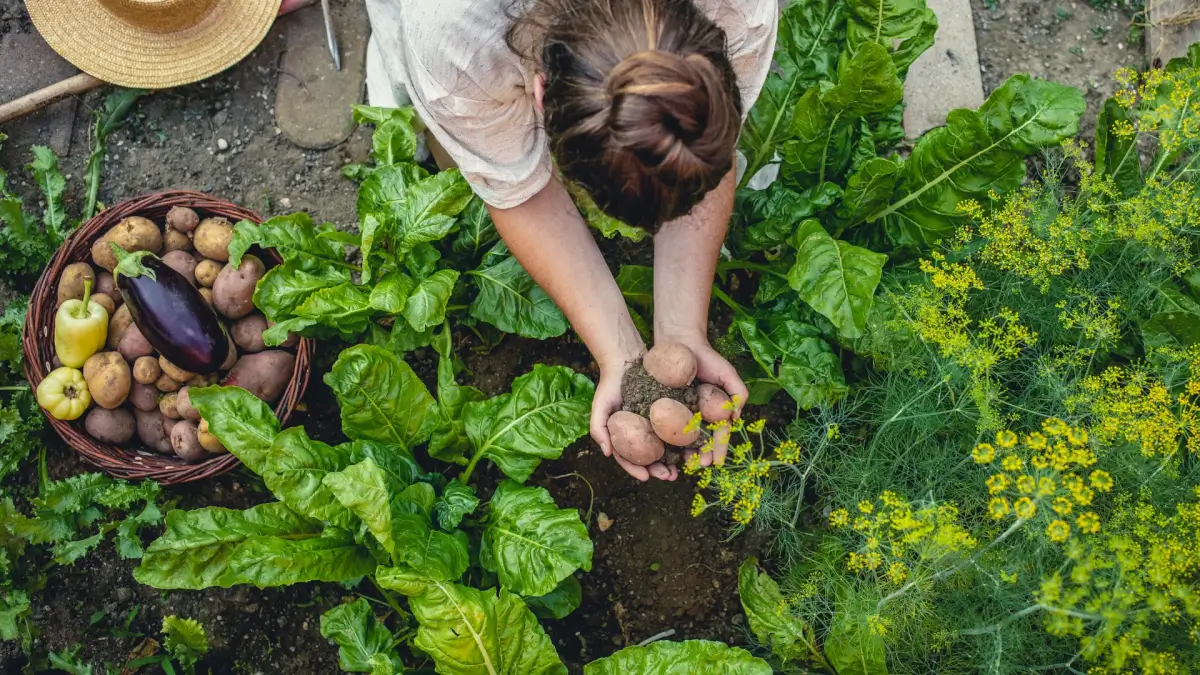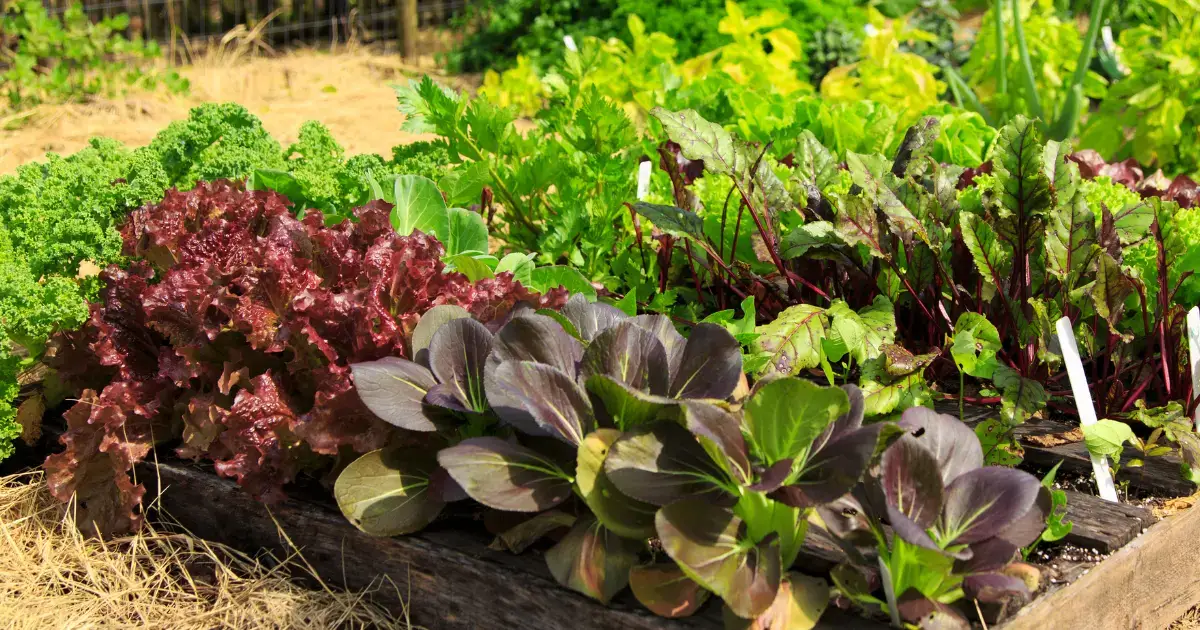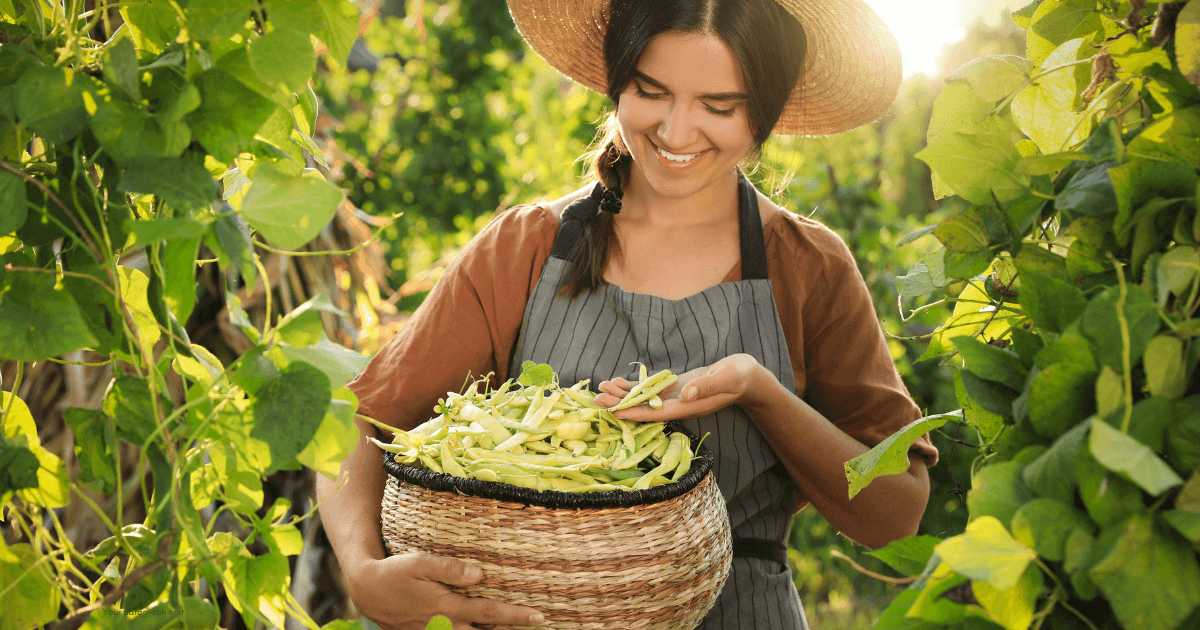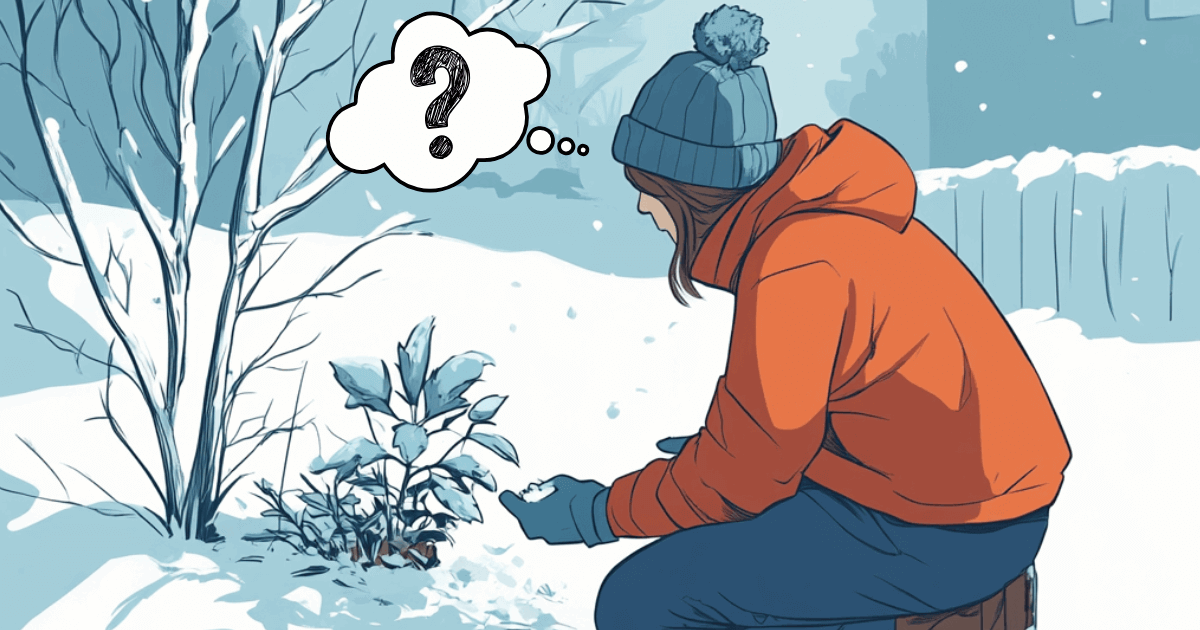
There is something so satisfying about the crunch, crunch of footsteps through hard-packed snow. It reminds me of walking to and from class back when I was a sorely out-of-place Texas girl at college in upstate New York.
I hope this finds you safe, warm, and with power.
As the snow begins to melt over the next few days, you may find yourself wondering about the status of your garden plants.
First, don’t fret. Remember that when you treat everything that you do in the garden as an experiment, you cannot fail. Whatever happens in the garden, good or bad, it’s just feedback.
The best course of action when a plant looks dead after a hard freeze? Do nothing.
More often than not, gardeners prematurely
When we had the big freeze of 2021, the wall-trellised star jasmine that came with my old house looked completely toast. I left the dead foliage in place out of sheer laziness, and in March, new leaves started emerging from the seemingly dead vines.
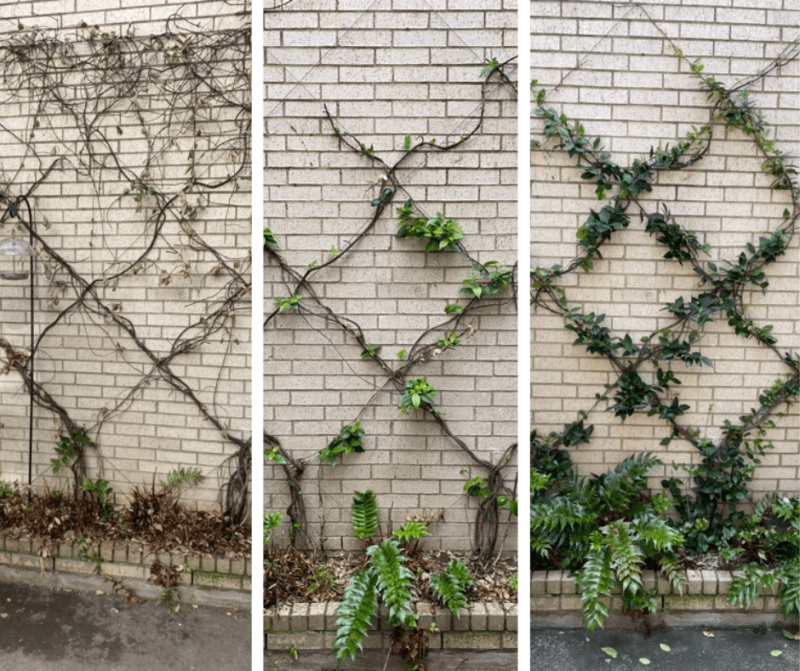
(At my new house, I re-created this trellis using Crossvine, a Texas native that is very cold tolerant. Star jasmine is a poor choice for North Texas. After the big freeze of 2021, the star jasmine vines never bloomed properly again due to repeated deep freezes.)
Annuals and warm-season vegetables? Pull out, and add to compost pile
Maybe you had fall tomato plants that were still alive a few days ago, but all warm-season vegetables and frost-sensitive annual flowers are goners and should be pulled out and added to the compost pile.
Survival of cool-season veggies and annuals will depend on a number of factors including plant health, location, and variety. For example, pansies tend to look fairly bad after a hard freeze, but they are resilient and will bounce back.
For plants hardy to our area (I still consider us Zone 7 for many reasons despite the USDA Zone 8 designation*), do not prune back or remove.
I know the damaged plants look unsightly, but you won’t know whether or not a plant has survived a hard freeze until growth resumes in the spring.
For perennials that naturally die back over winter and re-emerge from the base in spring (Salvia farinacea and nemorosa, Turk’s Cap, etc), you can cut back the dead foliage, BUT I only recommend that you do this if the plant has been in the ground for more than 12 months, and you have experience with cutting it back before spring’s new growth emerges.
Personally, I leave all perennials standing through winter. It provides winter interest in the garden, food and shelter for wildlife, and can insulate the plant crown (for some plants).
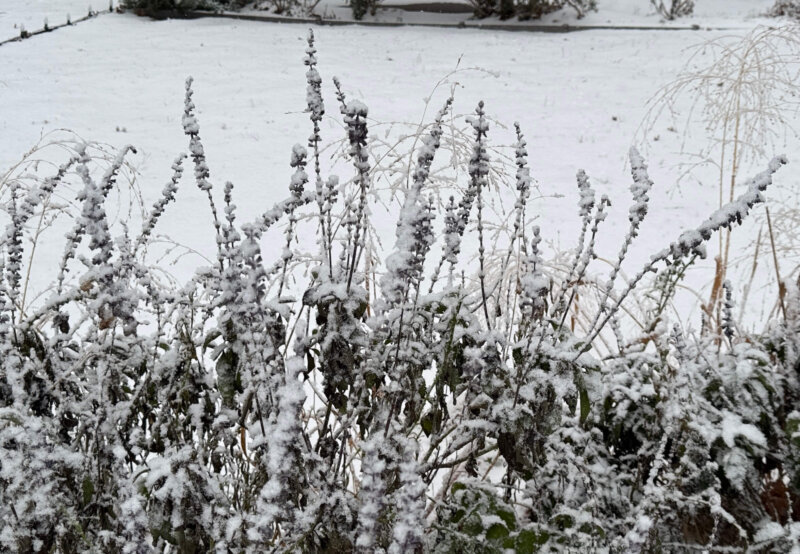
Here’s your gardening task list for this weekend:
- Make sure to order your onions, and plant them before the end of the month. Here in NTX we can only grow short-day or intermediate-day onions. I have had success with both. Remember that onions need regular fertilization with an all-nitrogen
fertilizer up until bulbing. Organic options include feathermeal, bloodmeal, cottonseed meal, and alfafa meal.
- Veggies to start by seed indoors: Broccoli, Cauliflower, Cabbage, Collard Greens, Kale, Lettuce, Spinach, Swiss Chard.
- Flowers to start by seed indoors: All perennials, Dianthus, Poppies, Feverfew, Snapdragons, Statice, Stock, Strawflowers, Sweet Peas, Yarrow.
- This is your final reminder to plant spring-blooming bulbs. It’s already late.
- Order seeds for direct-sowing in spring.
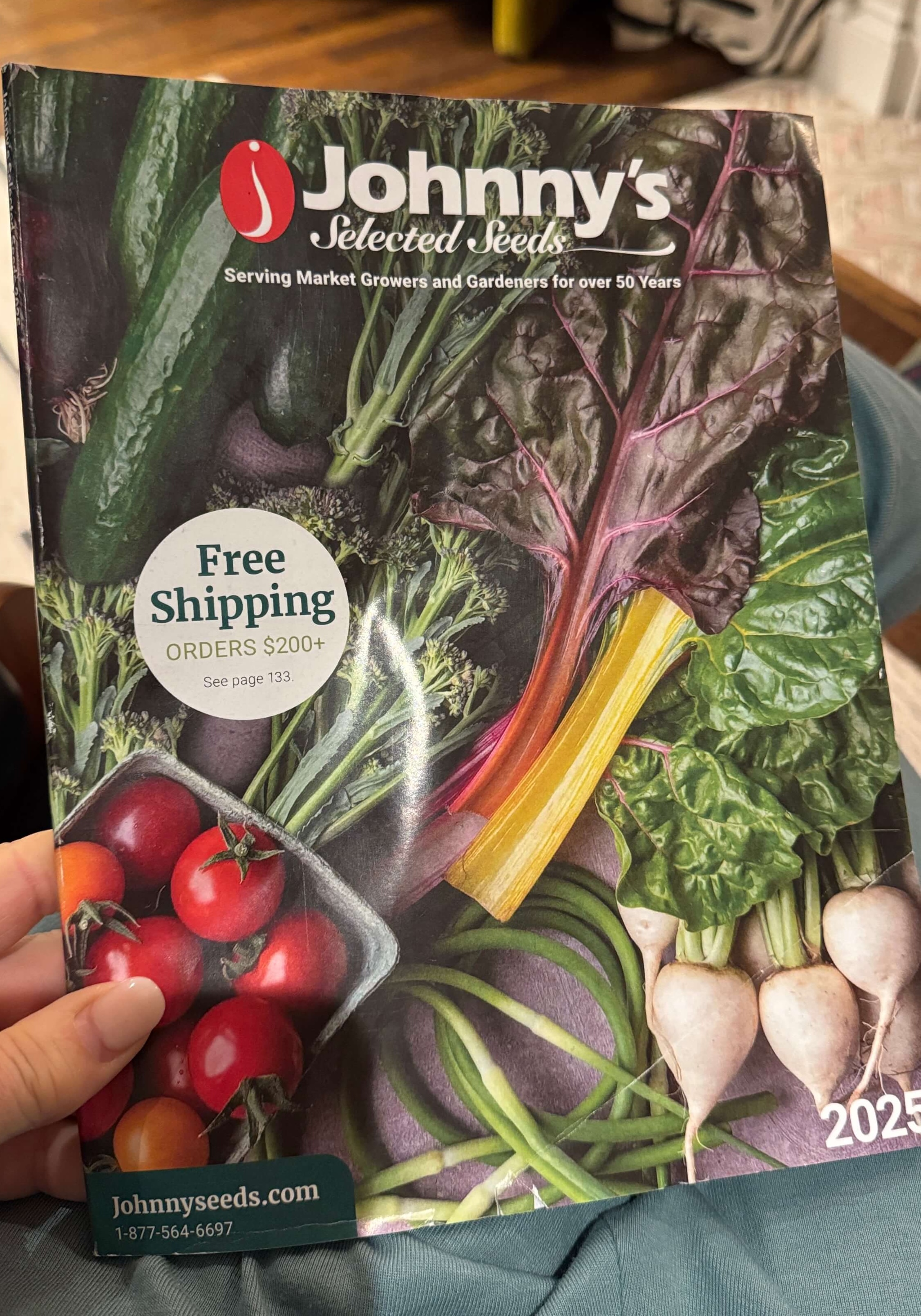
I just got in from running around the back yard with Daisy in an attempt to burn off some of that puppy energy. She will chase a ball, but can’t be bothered to bring it back, so really, I’m the one being exercised.
Once she settles down for a morning nap, I’m going to start my annual reading of the Johnny’s Catalog. I read it cover to cover every year. It’s highly educational, and I always learn something new. You can get a copy here.
Stay warm out there,
CWL
P.S. It’s time to start seeds indoors. If you’re unsure what to start now, that’s what the planner is for!! I’m still offering 15% off to celebrate the New Year, so even if you have one already, it’s a good time to buy one for a friend, colleague, or neighbor.
*I cover how to buy plants based on our actual weather history versus the current USDA zone designation in the winter cohort course (i.e. North Texas Gardening 101) that starts January 22. The program is designed to give you a comprehensive understanding of the North Texas climate pattern as it relates to gardening. Seats are filling quickly, so act now if you want to be included!
- New to Gardening? Join Our Step-by-Step Beginner Gardening Class - April 24, 2025
- Why “Intensive” Gardening is Not Good - March 9, 2025
- How to Grow Bush Beans - March 1, 2025

